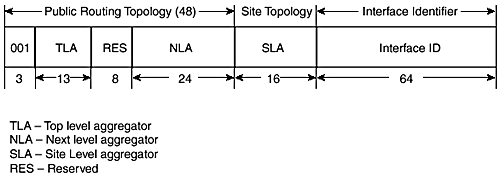Comments on IPv6
Depletion of the IPv4 address space has been steep with the tremendous growth of the Internet. Efficient and innovative schemes for controlling address usage, such as CIDR, Network Address Translation (NAT), and Dynamic Host Configuration Protocol (DHCP), have helped contain the problem. A limitation of IPv4 is challenges with renumbering , especially in cases where a medium-size network changes service providers. IPv4 addresses are assigned to service providers and portability is an issue. The inability of many sites to renumber as they migrate their networks to new service providers has led to severe fragmentation of the IPv4 address space, exacerbating the already high growth rate of the global Internet routing table. The growth of the Internet routing table and the increasing number of prefixes carried within service provider networks place undue demand for memory and route computation resources on Internet routers. These issues and many other limitations of IPv4 led to several enhancement proposals. These proposals were eventually consolidated into the IETF standard IPv6. In tackling one of the critical limitations of IPv4 (size of the address space), IPv6 proposes a larger 128-bit address size, compared to the 32-bit size of IPv4 addresses. Presumably, the four-times larger address should be large enough to support predicted future growth of the Internet. It might be interesting to note that IPv6 does not completely overhaul the IPv4 architecture but rather improves it in the following key areas:
-
Larger address space with flexible renumbering capability
-
Simplified header format with improved extensions and options
-
Flow labeling for improved quality-of-service handling
-
Improved security capabilities for authentication and data-integrity verification
IP mobile networking is one of the key drivers behind IPv6. It is envisaged that rapid evolution of mobile communications and related applications will result in numerous personal communication devices, such as cellular phones and personal digital assistants connecting to the Internet. This, in turn , should drive the need for more IP addresses, differentiated services, and secured data transmission.
An increasing number of data communications equipment vendors are delivering both router and host implementations of IPv6 at the same time as the international IPv6 testbed (6bone) expands to embrace more sites worldwide.
The three important protocols used on the Internet (BGP, IS-IS, and OSPF), as well as RIP, are being enhanced to support IPv6.
IPv6 Addressing
IPv6 retains the IPv4 notions of unicast and multicast addressing but removes the concept of broadcast addressing while introducing another type of address, referred to as anycast. The functions of broadcast addresses have been folded into those of multicast addresses. An anycast address represents a group of addresses, where data to the group is delivered to only one of the addresses in the group . Anycast addresses cannot be used as data sources and should be assigned only to routers.
IPv6 employs a constrained hierarchy in assigning addresses to promote efficient aggregation. Concepts such as top-level aggregator (TLA), next -level aggregator (NLA), and site-level aggregator (SLA) have been adopted in the addressing model. The general format of IPv6 addresses is shown in Figure 1-13. The 48 leftmost bits represent a public routing topology (PRT) prefix. A site obtains a PRT from its Internet service provider and uses it as its base prefix to autoconfigure hosts . Renumbering also involves just changing the site's PRT using a newly introduced Router Renumbering (RR) protocol.
Figure 1-13. IPv6 address format.

To support IPv6, IP protocols originally designed for IPv4 need format changes to modify all occurrences of the 32-bit IPv4 addressing to 128-bit IPv6 fields. In particular, the IS-IS protocol lends itself to carrying additional information because of the flexibility in its packet formats and architectural design.
Representation of IPv6 addresses is done in hexadecimal because of the address size. Three methods of representation are proposed. The first is preferred for normal representation, another allows for compression of an address when it consists of a continuous string of 0s, and the last enables concatenation of IPv6 and IPv4 addresses in a mixed format. This scheme suggests grouping the bits,16 in a group with a colon separating them. Each 16-bit (2-byte) group is represented in hexadecimal, as follows :
FEDC:BA98:7654:3210:FEDC:BA98:7654:3210
Because of the length of IPv6 addresses and their encoding in hexadecimal, humans have a greater level of difficulty when handling Ipv6 as compared to the dotted -decimal representation of IPv4. Name -to-address resolution will be key for operator interface requirements. Consequently, work is already in place for extensions to the IPv4 DNS to support IPv6. In an analogy to the IPv4 DNS A record, the new resource record defined for IPv6 is symbolically AAAA (code 28).
EAN: 2147483647
Pages: 144